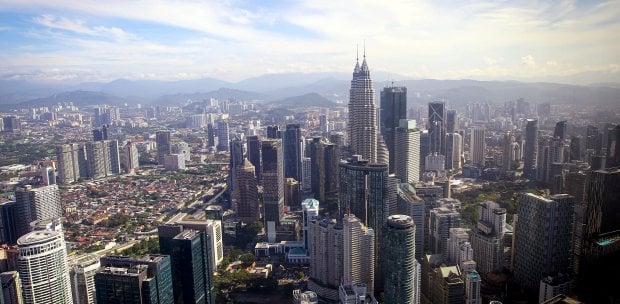KUALA LUMPUR: The World Bank forecasts Malaysia's economy to grow an "underachieving" 4.3 per cent in 2024 and 4.5 per cent in 2025 supported by private consumption.
World Bank East Asia and Pacific chief economist Aaditya Mattoo said despite the growth Malaysia has recorded thus far, the country is still deemed an underachiever.
"Malaysia is another country which has underachieved. It has tremendous potential and should not be satisfied with the growth rate we are seeing.
"In terms of debt, its government debt is not high, although it has increased significantly in the wake of the pandemic. Household debt is relatively high at between 60 and 70 percent of gross domestic product (GDP) and corporate debt is relatively high at more than 80 per cent of GDP.
"It is a relatively open economy and this high global interest rates do have an impact on Malaysia," he said in a virtual briefing in conjunction with the World Bank East Asia and Pacific economic update.
However, Malaysia is poised to benefit from the expected exports recovery as the economy depends a lot on export activities.
The excitement in the electrical and electronics sector will also support Malaysia's growth.
"It is a country which has continued to restrict competition especially in the services sector.
"It made a remarkable transition from commodities to manufacturing but to transition to a more sophisticated manufacturing and services, Malaysia has been stuck.
"Its skilled people choose to leave and work in Singapore. Malaysia's challenge is to generate that virtual cycle between creating human capacity and encouraging new opportunities for Malaysians within Malaysia," added Mattoo.
Meanwhile, the report noted that developing East Asia and Pacific is growing faster than the rest of the world but slower than before the pandemic.
While recovering global trade and easing financial conditions will support economies in the region, increasing protectionism and policy uncertainty will dampen growth.
Regional growth is projected to ease to 4.5 per cent in 2024 from 5.1 per cent last year. Growth in developing East Asia and Pacific excluding China is projected to pick up to 4.6 per cent this year, up from 4.4 per cent in 2023.
China is projected to record moderate growth to 4.5 per cent from 5.2 per cent in 2023, as high debt, a weak property sector, and trade frictions weigh on the economy.
Among Pacific Island countries, growth is forecast to slow to 3.6 per cent in 2024 from 5.6 per cent last year as the post- pandemic rebound dissipates.
The outlook is subject to downside risks, which include a greater than expected slowdown in the global economy, higher for longer interest rates in major economies, increased uncertainty around the world about economic policies, and an intensification of geopolitical tensions.
A Special Focus section of the report presented evidence that productivity growth among leading firms in the region has lagged that of leading global companies.
The gap is especially stark in digital-intensive sectors. Because new technologies typically gain traction first among leading firms and cascade later to other businesses, this trend raised concern across the business spectrum, it stated.
Impediments to competition, uneven worker skills and weak management contribute to lagging productivity growth among firms.
"While growth in per capita incomes in the East Asia and Pacific region has surpassed most other developing economies in recent decades, it has been driven by investment rather than productivity growth.
"Bold policy action to unleash competition, improve infrastructure, and reform education could revitalize the region's economy," said Mattoo.






